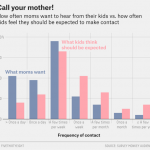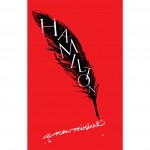In the course of promoting his new book, Full Fathom Five, Max Gladstone recently did an AMA on reddit, in which someone asked him why he decided to write his necromancers as lawyerly types. His reply:
[N]ecromancy and bankruptcy law in specific have a lot in common: take something that’s dead, surround it with a circle of protection, carve it up, argue with other people about what parts of the dead thing work and what don’t, remove the stuff that doesn’t, wire together the stuff that does, hook corpse up to lightning generator, and viola! Instant restructuring. Except what the process produces can, if you’re not careful, be very different from what came before.
In Books and Culture, there’s an interesting profile of the National Museum of Funeral History. The rituals and expectations surrounding death aren’t uniform across the world, or even across the very short period (relatively speaking) of American history. The article (presumably like the museum) is a good tour of the logic of other practices.
Fearing the demon that took possession of the body after death, Zoroastrians in Iran, Afghanistan, and India built squat “towers of silence” for their dead. The remains were considered dangerously polluted. When Islamic Iran made such practices illegal and mandated burial, its Zoroastrian citizens lined graves with stones and then poured in concrete to prevent contact of the polluted body with the earth.
If you want to read more about America’s changing attitude towards death and burial, I strongly recommend Drew Gilpin Faust’s This Republic of Suffering.
If you’d like to save the dying–well, little circles that represent the dying–I’ve been really enjoying Vax, a network analysis and vaccination game. As an outbreak spread, you as player has to decide where to disrupt a mesh of social ties to prevent a malady from taking hold. It’s fun to play, and I like the challenge of quickly scanning a network for critical disruption points.
If you’d like your online games to be a little more directly helpful to scientists, you might like Eyewire, in which volunteers help scientists trace out the connections of individual neurons. (Computers are still having trouble with this task).
Anyone can sign up online, learn to use the software and start working on what Amy Robinson, the creative director of Eyewire, calls a “3-D coloring book.” The task is something like tracing one piece of yarn through an extremely tangled ball.
More than 130,000 players in 145 countries, at last count, work on a cube that represents a bit of retinal tissue 4.5 microns on a side. The many branches of neurons are densely packed within. A micron is .00004 inches or, in Eyewire’s calculus, about one-tenth the width of a human hair. Some of the players spend upward of 40 hours a week on Eyewire.
These cubes are created by an automated process in which electron microscopes make images of ultrathin slices of brain tissue. Computers then analyze and compile the data to create a three-dimensional representation of a cube of tissue with every neuron and connection visible.
But while computers can reconstruct much of the structure, so far humans are needed as well because their ability to see patterns is much better. The players, as well as paid technicians, color in all the branches of an individual neuron.
Who knows, maybe this will become the new CAPTCHA.
While volunteers tease out finegrained connections between neurons, Claire Halpine has been doing the same thing for dating slang. Her Devil’s Dictionary of Dating in First Things includes these gems:
Date, n. Indicate or expose as being old-fashioned
Friend zone, n. Section of the School of Athens occupied by Platonists
Sexual Revolution, n. A non-consensual exchange of bourgeois and bohemian norms
Soul mate, n. One who assists on the ship ferrying a soul to Hades
Meanwhile, Mike Blume reminds me of this excerpt from Stephanie Coontz, about all the kinds of love that used to be natural between friends, before our society reserved many of them to sexual relationships only.
Perfectly respectable Victorian women wrote to each other in terms such as these: ‘I hope for you so much, and feel so eager for you…that the expectation once more to see your face again, makes me feel hot and feverish.’ They recorded the ‘furnace blast’ of their ‘passionate attachments’ to each other… They carved their initials into trees, set flowers in front of one another’s portraits, danced together, kissed, held hands, and endured intense jealousies over rivals or small slights… Today if a woman died and her son or husband found such diaries or letters in her effects, he would probably destroy them in rage or humiliation. In the nineteenth century, these sentiments were so respectable that surviving relatives often published them in elegies…. [In the 1920s] people’s interpretation of physical contact became extraordinarily ‘privatized and sexualized,’ so that all types of touching, kissing, and holding were seen as sexual foreplay rather than accepted as ordinary means of communication that carried different meanings in different contexts… It is not that homosexuality was acceptable before; but now a wider range of behavior opened a person up to being branded as a homosexual… The romantic friendships that had existed among many unmarried men in the nineteenth century were no longer compatible with heterosexual identity.
Finally, I said I’d post costume updates (to force myself to make progress). Here I am holding the bolt of fabric I bought this week, and, once this is posted, I’ll start cutting out the pattern I’m using, along with the muslin I bought for a test run.
And while I begin at the beginning, here are some finished costumes, filmed in bullet time, for you to enjoy:
https://www.youtube.com/watch?v=sisGqMf7G7Y
For more Quick Takes, visit Conversion Diary!














